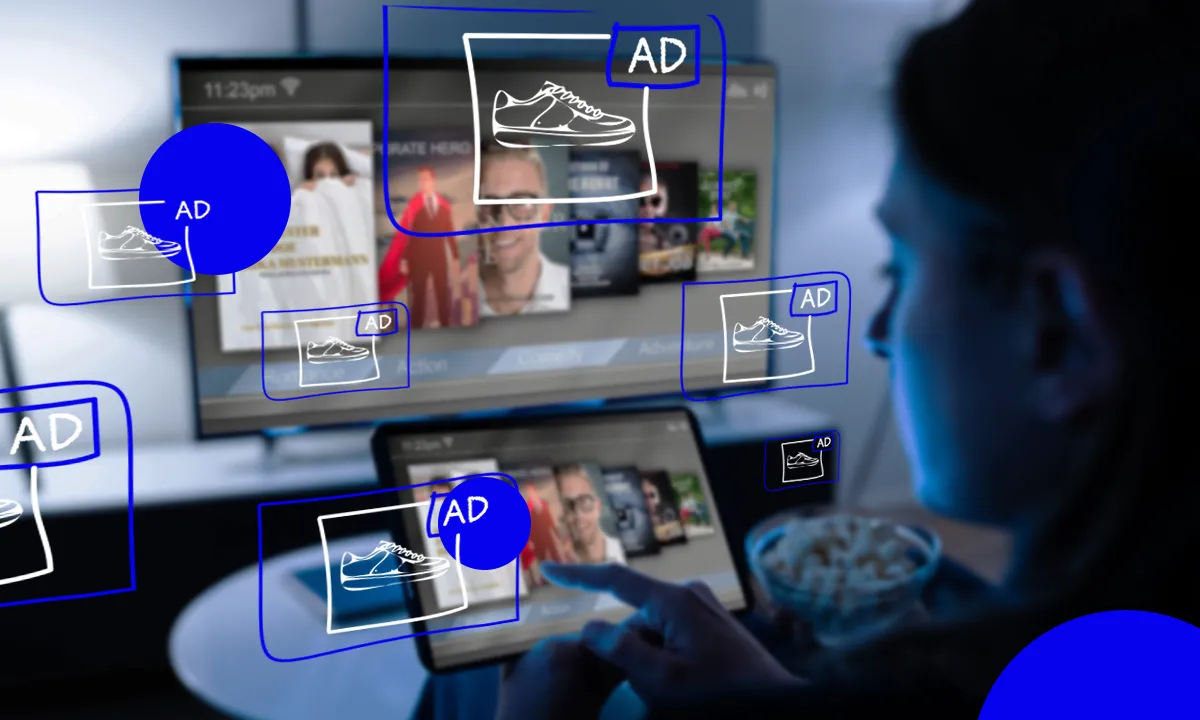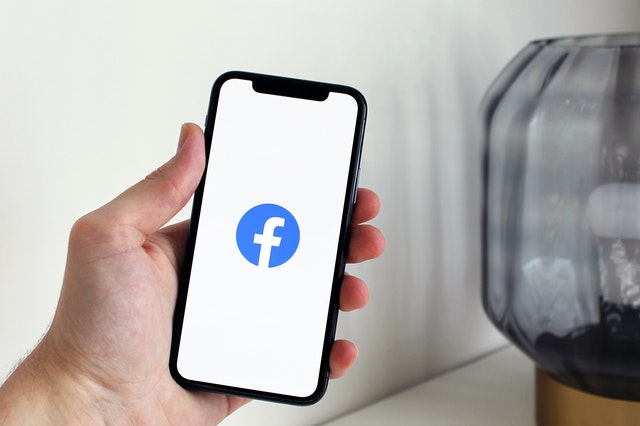Facebook Ad Frequency: The Complete Guide for 2022
Have you ever wondered what a good Facebook ad frequency is and how to use it to drive more business?
Well, you’ve come to the right place.
Many of your customers are using Facebook, even if they’re not directly buying on the platform.
Facebook recently reported that it has an average 1.88 billion daily active users as of March 2021. The social media platform also enjoys 2.85 billion monthly active users, a 10% rise from 2020 figures.
This means there’s a massive opportunity for online businesses to showcase and sell their products to their customers on Facebook.
But among the questions businesses often wonder about are: what does the Facebook ad frequency mean? How does it work? And what is the Facebook frequency cap?
In this article, we’re going to help you understand:
What is ad frequency?
An ad’s frequency is the number of times an ad appears to a potential customer on Google or a social media platform.
Many advertisers and digital media buyers say that showing the same ad or different versions of an ad to a customer multiple times encourages them to buy the product or service.
What is Facebook ad frequency?
Like other social media platforms, Facebook has a frequency for its ads.
The Facebook ad frequency is the number of times your ad appears to viewers and customers on the platform.
Although advertisers believe the higher the ad frequency, the better, customers are people who may have a different opinion.
How many times are you, as a person, willing to see the same ad in your Facebook feed?
May be that ad about a new tool is too repetitive you end up asking Facebook to hide it.
This brings us to the Facebook frequency cap and the relevance score.
What is the Facebook frequency cap?
The Facebook frequency cap is the maximum number of times an ad may appear to a potential viewer or customer.
In the past, advertisers could tweak the number of times their ad appears to users.
They could decide if their ad could appear 3 times a day or 5 times a week.
However, the situation has significantly changed. Facebook no longer allows advertisers to raise or lower their Facebook frequency cap.

The process is automated based on a number of factors including how many people engage with the ad and how many hide it.
What are ad relevance diagnostics?
On Facebook, users can interact with your ads. But sometimes, they aren’t happy with the ad they’re seeing so they ask Facebook to hide it or they report it.
If a user opts to hide or report an ad, they’ll be presented with a number of reasons why they no longer want to see the ad.
Facebook lists this under its ad relevance diagnostics.
Through its ad relevance diagnostics, Facebook looks to see “how relevant each ad is to a person before delivering an ad to that person.”
The more relevant the ads, the less they’ll cost and the better results they’ll get. “This leads to better experiences for people and businesses alike,” Facebook notes.
Facebook explains that its “ad relevance diagnostics [will] help you diagnose underperforming ads across 3 dimensions of relevance: quality, engagement, and conversion.”
Facebook recommends you review these diagnostics together rather than separately, adding that you’ll get more insights that way.
“If your ads aren’t meeting your advertising objectives, you can use ad relevance diagnostics to understand whether adjustments to your creative assets, post-click experience, or audience targeting could improve performance,” Facebook explains.
The social platform’s ad relevance diagnostics look at 3 elements and compare ads targeting the same audience. These are:
- Quality ranking, which looks at the quality of your ad compared to others.
- Engagement rate ranking, which forecasts your ad’s “expected engagement rate.”
- Conversion rate ranking, which looks at your ad’s expected conversion rate compared to ads targeting your same audience.
Remember: The ad relevance diagnostics are estimates. So, it’s best to look at them and use them as a guide.
“The [diagnostics] can be very useful in helping you improve the overall quality of your ads for the audiences you’re serving them to,” notes Social Media Examiner.
What is Facebook ad quality ranking?
We’ve mentioned that Facebook allows its users to hide or report an ad. This hiding and reporting helps the social platform rank the quality of its ads.
This is known as Facebook ad quality ranking or simply, as quality ranking.
“Quality ranking explains how your ad’s perceived quality compared to ads competing for the same audience,” Facebook explains.
If a Facebook user sees an ad more times than they would like, they can tell Facebook to stop showing them this ad.
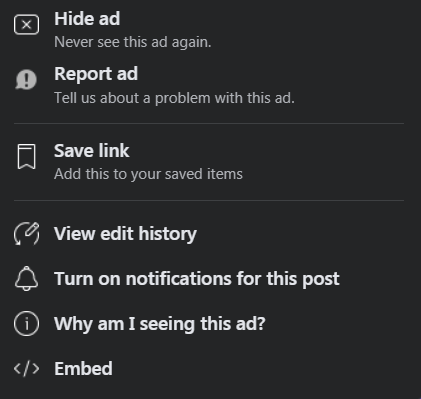
Once the user – or your potential customer – clicks “Hide ad,” they’ll be asked to select a reason for why they don’t want to see that ad again.
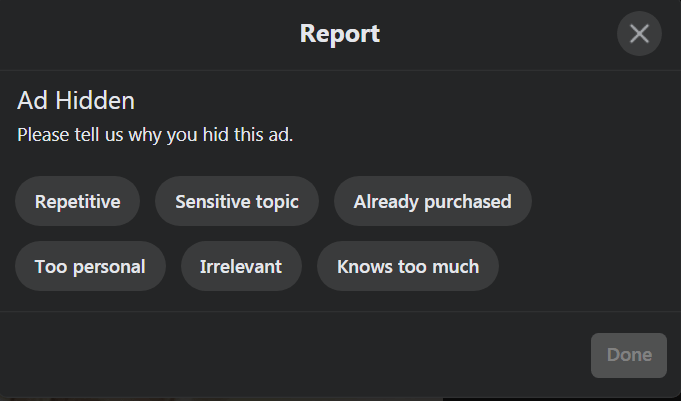
Another option Facebook users get is to “Report ad.”
This usually comes in the form of an ad that violates a user’s beliefs or personal preferences. It could also be an ad that users find offensive.
Facebook uses the quality ranking to measure ad quality by looking at signals, including user feedback for those who choose to view, hide, or report ads.
Facebook also looks at “assessments of low-quality attributes in the ad, such as withholding information, sensationalized language and engagement bait.”
Both “Hide ad” and “Report ad” are part of Facebook’s way to measure your ad’s performance and your relevance score.
What is the Facebook relevance score?
Facebook uses the relevance score to see how companies’ ads are performing across its platform and to prioritize which ads appear to the user first.
If your ads get reported or get negative feedback or many “hide ad” requests, then your relevance score will plummet.
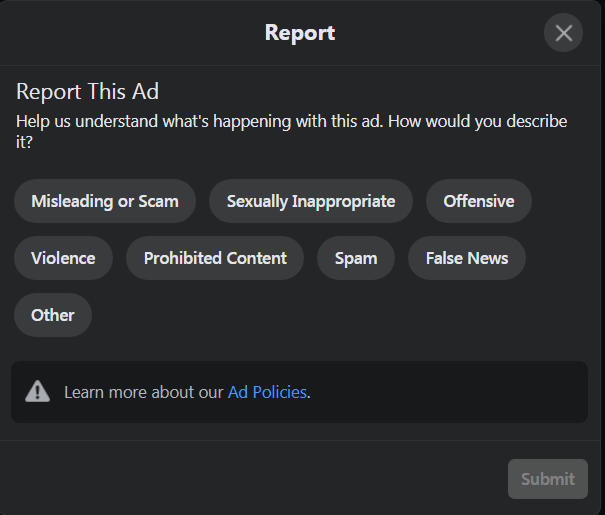
If users engage with your ads, your relevance score will increase.
The maximum relevance score is 10. If you get a 10 score on your ad, Facebook will show your ad to more than other ads targeting your same audience.
But 10 is a near-impossible target. Your ad may have a score of 8 or 9 when your first launch it because not many people have seen it.
But as your ad appears to more people, its relevance score will gradually go down. And that’s normal.
Facebook Ad Frequency vs Relevance Score
The more your Facebook ad frequency increases, the lower your relevance score will be.
To see how well your ads are performing, monitor their engagements along with your relevance score. Once your score drops significantly, you can stop the campaign because your ad will be seen by fewer people.
“If you create a website clicks or impressions campaign, you can watch your ad’s performance closely and manually stop the campaign if you notice your frequency going overboard and your relevancy score going down. For better results, you can adjust your targeting or creative, and relaunch the campaign,” suggests Social Media Examiner.
What is reach and frequency buying?
An option that Facebook gives ‘some’ advertisers is its ‘reach and frequency buying’ ad type.
“Reach and frequency buying allows you to book campaigns in advance and predict how those campaigns will perform before they run,” the platform explains.
However, reach and frequency buying isn’t open to everyone. Facebook only allows high-spending advertisers to use this option.
Facebook explains that its reach and frequency buying option is for advertisers who want to:
- Reach an audience of over 200,000 people
- Target an entire country, not just a local area
- Have predictable reach for their ads
- Control the number of times people get to see their ads
- Plan and book campaigns in advance
Although reach and frequency buying provide a “predictable delivery of reach and impressions…it’s not a 100% guarantee of either,” Facebook notes.
Advertisers looking to use reach and frequency buying will have to contact Facebook first.
The ad frequency debate
Some say having a high frequency rate reminds your audience and gets them to buy. But sometimes, the audience grows sick and tired of your ads that they click the ‘hide ad’ button. This means it’s too much for them.
This is called ad fatigue. And you want to avoid this as much as you can.
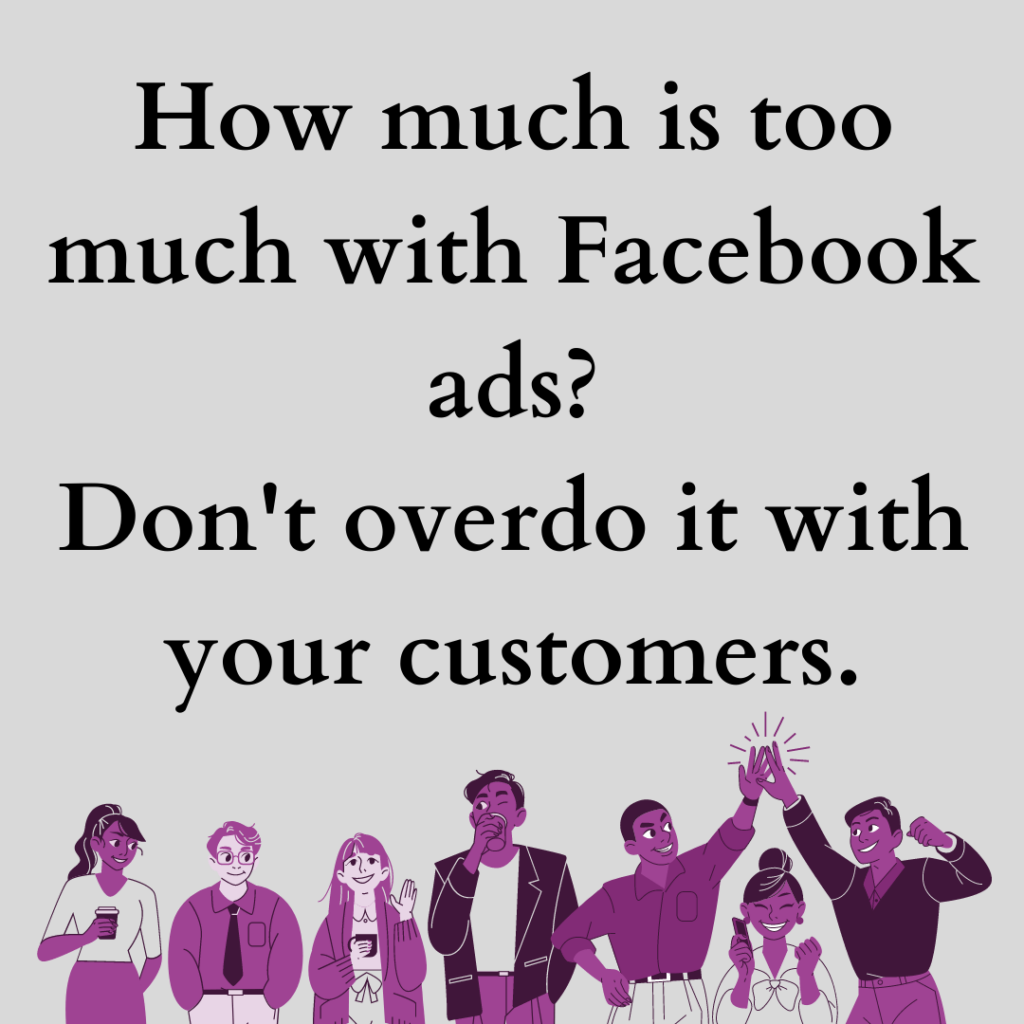
In addition, as your ad’s frequency increases so does your cost per acquisition (CPA).
Why? “Because if users are continually seeing ads and not taking action, then they’re either not the right audience for those ads in the first place, and/or they’re being turned off by the number of times they’re seeing the same ad. If you’ve been shown the same advert 15x or more, you’re likely to get pretty frustrated with that ad, and consequently, the brand serving it to you,” explains Social Media Today.
To learn more about CPA and other marketing and e-commerce terminology, visit our list of 46 E-commerce Vocabulary, Metrics and Biz Terms You Need to Know.
What is a good Facebook ad frequency?
You now have a good idea about Facebook ad frequency and the different elements that affect Facebook ads.
But often businesses will ask “What is a good Facebook ad frequency?”
Unfortunately, with everything in marketing, there isn’t a one-size-fits-all answer. There’s no ideal frequency for Facebook ads.
That said, when you run ads, you’ll be able to gauge what translates as an ideal frequency for your business.
Remember: Facebook ad frequency is an average. It’s not an exact number. This means that some users in your audience may have seen your ad more times than others.
Facebook reports the overall average.
While there is no ‘ideal’ Facebook ad frequency and you can’t tweak your Facebook frequency cap, there may be a range worth experimenting with.
According to Social Media Today, having your frequency “between 1.8 – 4 for optimum performance when putting your plans together” is a good target.
Getting started with Facebook ads
Now that you know about Facebook ad frequency and the Facebook frequency cap, it’s time to make sure you know what types of audiences you’re targeting and how.
As an e-commerce store, you need to do 2 things:
1. Add the Facebook Pixel to your website
If you’re selling directly from your website, that is your ads direct customers to your website, then you need the Facebook Pixel.
The Pixel is a type of code that allows Facebook to track users clicking your ads, going to your website, and what they are doing there.
2. Create a Facebook Product Catalog
The next step is to upload your products to Facebook. The platform allows you to create a Facebook Product Catalog.
Types of Facebook audiences
Last but not least, it’s important to know what types of audiences you can target on Facebook.
There are 3 main Facebook audiences you need to be aware of:
1. Custom audience
Facebook custom audiences allow you to find your “existing audiences among people who are on Facebook,” the social platform explains.
How do you find these people? By uploading data such as your customer lists website and/or mobile app traffic to the platform, which creates those custom audiences.
Remember: A Facebook custom audience is an audience you know and who are familiar with your brand.
2. Lookalike audience
Once you have a custom audience, you can use them to create a lookalike audience.
A lookalike audience is an audience that is similar to your current audience.
They may or may not be familiar with your brand but this audience shares some common ground with people who already buy from you.
This means they have bigger buying potential and are more likely to become your customers.
3. Dynamic audience
The dynamic audience is limited to businesses that use a Facebook product catalog.
You see, some small online stores don’t have a catalog on Facebook and market merely through images or redirect to their website without a product catalog.
The dynamic audience are those people who have engaged with the products within your Facebook product catalog. Whether they have clicked a product, added it to their cart, or purchased it previously, these people become part of your dynamic audience.
Marketing automation for Facebook
Creating and managing ads on Facebook is both easy and hard.
As you can see, there are many variables that require your attention, most of them are focused around your audience.
But building and segmenting your audience can be a tiring process. Not to mention having to create ad sets, experiment, and keep tabs on the performance of your ads.
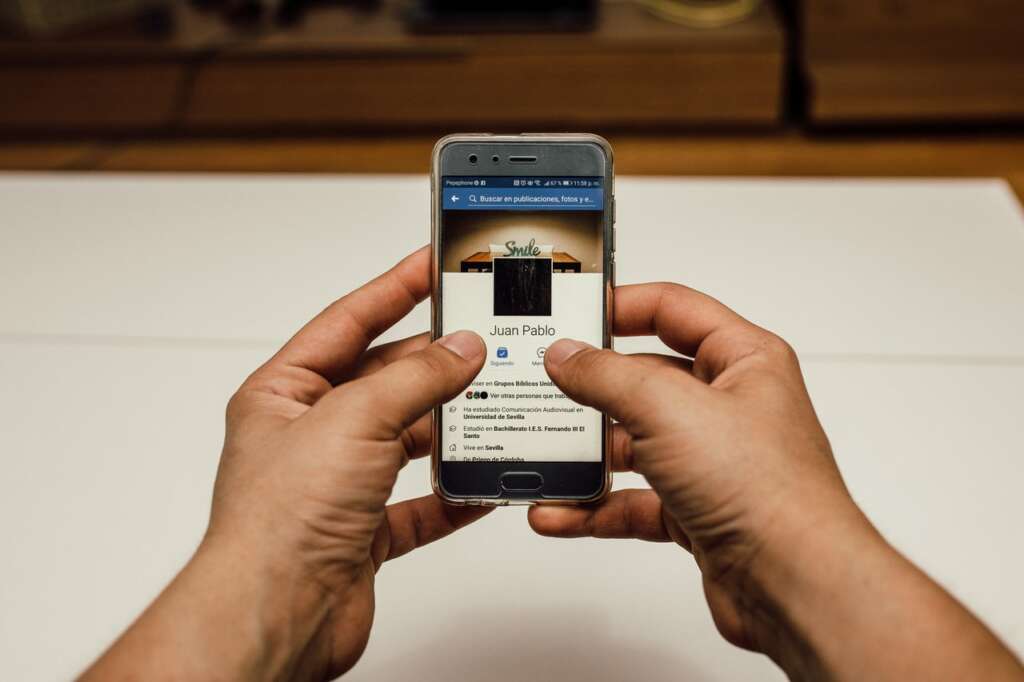
If you’re a large business with many customer segments, then you’ll need a segmentation strategy to guide your ad creation.
So how can you work out all the deets and details of creating well-segmented and well-performing ads? The answer: Using marketing automation tools.
Read: These are the 8 Marketing Automation Trends You Need to Know
Marketing automation is but one form of automation for e-commerce businesses. It can save you time, money, and lots of experimentation time.
Convertedin is one such marketing automation tool, you can use with Facebook and other social media platforms.
With Convertedin, you can upload your customer data and the platform will automatically divide them into segments and create lookalike audiences for them.
In addition, you can easily generate images for your products directly through Convertedin.
Next steps
Now it’s time to get those ads before your customers.
Remember: Too much is never a good thing. But since Facebook no longer allows advertisers to tweak their frequency cap, you’ll have to see what works for you.
You can explore all the benefits Convertedin has to offer with our 14-day free trial (and we don’t ask you for credit card info).
Grow your sales with segmented customers and automate your ads using Convertedin.
